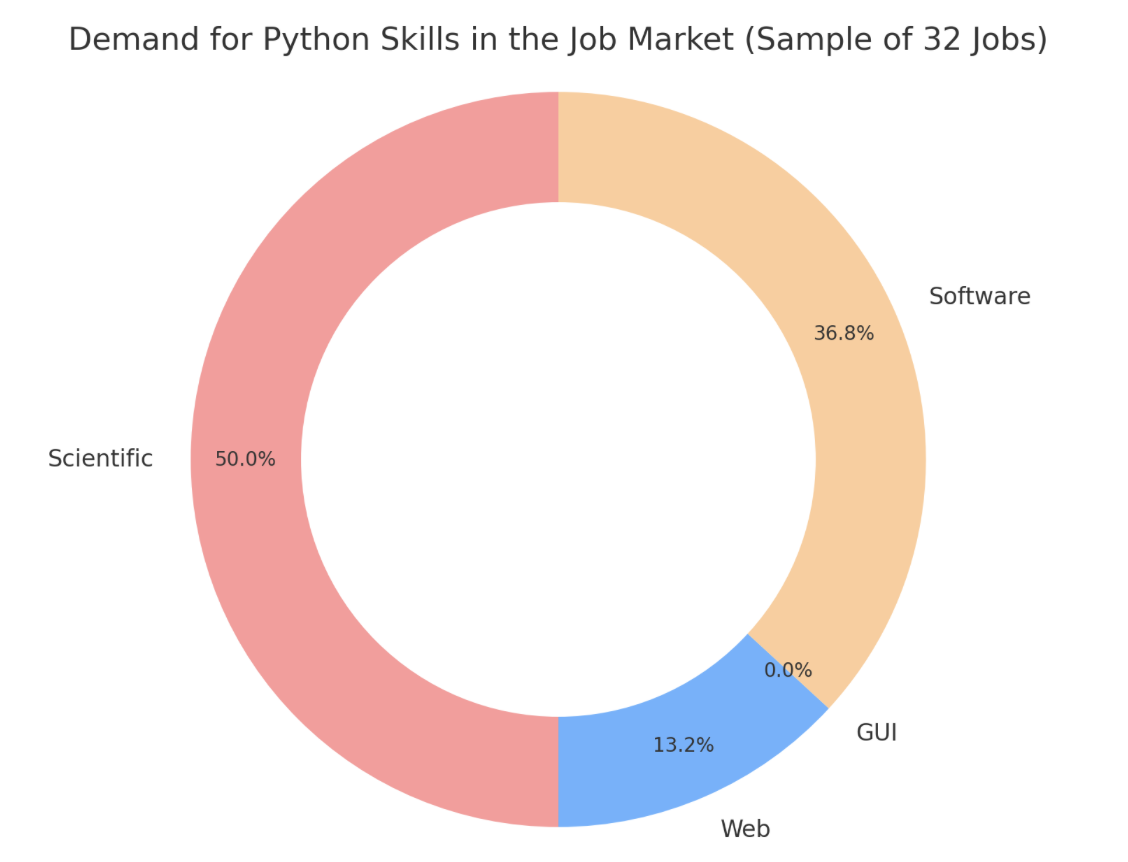Companies are looking for these Python skills

Many who decide to learn Python are quite clear on how they want to use the language. For example, a data analyst wants to boost his or her skills by learning how to process data programmatically with Python instead of using graphical based software such as Excel. That’s one good example of how to use Python.
However, many beginners just want to learn Python because they have heard it’s a skill in high demand on the market, but they still don’t know what can be done with Python.
So, in this article, I want to show you an overview of where you can use Python. The report is based on both what Python is able to do, but also on some interesting data extracted from the Indeed job search engine showing the actual demand for Python in the job market.
The first thing to look at is the Python official webpage, where you can see what fields you can apply Python to. If you’re lazy to click the link, here is the overview in plain language:
- Web development. You can build with Python small to complex web applications. For that, you would need one of the third-party Python web framework. The most famous ones are Django and Flask. Django is more popular, but Flask is easier to learn.
- Scientific and Numeric. If this concept confuses you, let me mention some examples such as using Python for weather data analysis, processing land surface temperature satellite images, predicting soccer games, and probably everything else that has to do with data and numbers.
- Desktop GUIs (Graphical User Interfaces). Building desktop programs with a graphical user interface is not the strongest point of Python, and it’s hard to find a job that requires that skill. That’s because there are other languages which are better at that. However, Python libraries such as wxPython or PyQT are still good for building desktop GUIs. Here is a list of known GUIs built with wxPython for instance.
- Software Development. Python has good use in software development, and it is used to build control and testing. You will notice that software development jobs that require Python will almost always require other languages such as Java and C++ in addition.
So, these are the four areas where Python is used and hopefully, this information will help you create a more clear idea of what you want to do with Python. Anyway, enough with theory.
Let’s now look at the actual job market.
I made some simple analysis. I went to indeed.com, searched for the “python” keyword, and clicked in each of the first 32 job posts. Furthermore, I read through each of the job posts and took notes on whether the job was about Python for web development, scientific and numeric, GUI, or software development or a combination among those.
Here are the results (I did the calculations using Python of course):
>>> jobs.sum()
Scientific 19
Web 5
GUI 0
Software 14
Of course, there was some overlap of skills there because for example there were jobs that required both software development and data science at the same time. Anyway, as you can see Python for scientific applications was the top skill required by 60% of the jobs (or 19 out of 32), followed by software development at around 40% and web development standing at 15%. No job required GUIs built with Python out of these 32 random Python jobs.
That’s the analysis. A sample of 32 jobs doesn’t produce splendid accuracy, but it surely gives a good overview of what is in demand. Most of the jobs were in the US, including jobs from Google, Microsoft, and MasterCard.
If you’re ready to be a professional Python programmer, you can take my comprehensive 50-hour complete Python course on Udemy. Many of my 310 thousands of students have achieved their dream job by completing Python Mega Course: Learn Python in 60 Days, Build 20 Apps. You can check out the full curriculum that this course offers, and if you find it interesting, you can get the course and take the first step to be a Python professional.
Happy learning!
Next LectureTable of Contents
Recommended Course
Python Mega Course: Learn Python in 60 Days, Build 20 Apps
Learn Python on Udemy completely in 60 days or less by building 20 real-world applications from web development to data science.
